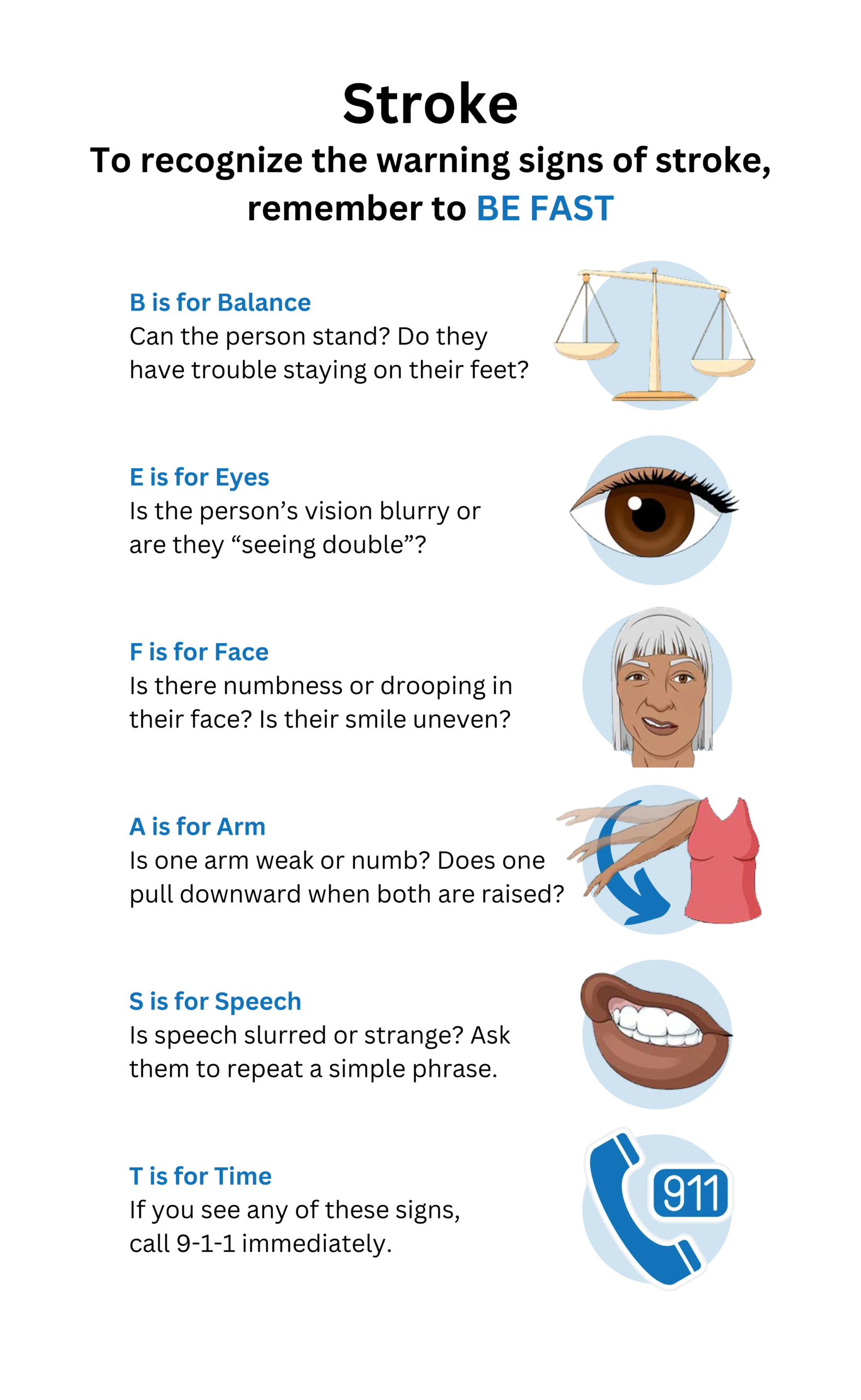Stroke Treatments
Emergency treatment depends on whether you’re having an ischemic or hemorrhagic stroke. Emergency treatments of ischemic strokes focus on breaking up the clot and/or physically removing the clot. Emergency treatments of hemorrhagic stroke focuses on controlling the bleeding and reducing pressure in the brain caused by excess fluid.
“Clot Buster” Medications for Ischemic Strokes
The main treatment for an ischemic stroke is a medicine called tissue plasminogen activator (tPA). It breaks up the blood clots that block blood flow to your brain. A healthcare provider will inject tPA into a vein in your arm. This type of medicine must be given within 3 hours after stroke symptoms start. Patient with a high risk for bleeding may not be candidates for tPA.
Mechanical Thrombectomy for Ischemic Strokes
A catheterization procedure known as mechanical thrombectomy could be an option for treating an ischemic stroke, depending on the time of onset and size of the infarction. This is particularly helpful with patients who are not good candidates for tPA. Thrombectomy procedures are also time-sensitive, and the best window for these procedures is within 24 hours after symptoms start. This procedure involves one of our neurointerventional surgeons inserting a catheter (tube-like) device into a major blood vessel and steering it up to the clot in your brain. Once there, the catheter has a tool at its tip that can remove the clot.
Endovascular Coiling for Hemorrhagic Stroke
The goal of endovascular coiling is to isolate an aneurysm or AVM from the normal blood circulation, without blocking off any small arteries nearby or narrowing the main vessel. One of our neurointerventional surgeons would perform this procedure using a minimally invasive technique. Our surgeon guides the catheter though the arterial network until the tip of the catheter reaches the site of the aneurysm or AVM. The surgeon then introduces a coil, made of platinum and other materials, and comes in a variety of shapes, sizes, and coatings that promote clotting. Multiple coils are packed inside the dome to block normal blood flow from entering. Over time, a clot forms inside the aneurysm, effectively removing the risk of aneurysm rupture.
Transient ischemic attack (TIA)
A transient ischemic attack (TIA) — sometimes called a “mini-stroke” — is similar to a stroke, but the effects are temporary. These are often warning signs that a person has a very high risk of having a true stroke in the near future. Because of that, a person who has a TIA needs emergency medical care as soon as possible.
Risk Factors
Factors that you can control account for 82% to 90% of all strokes:
- High blood pressure
- Obesity
- Physical inactivity
- Poor diet
- Smoking
Services We Provide
IntelliRad Imaging is proud to employ four neurointerventional surgeons as well as three interventional radiologists who are capable and ready for stroke treatments in patients at our partner hospitals in south Florida. We also have an outpatient clinic where we follow up with our post-discharge stroke patients.


